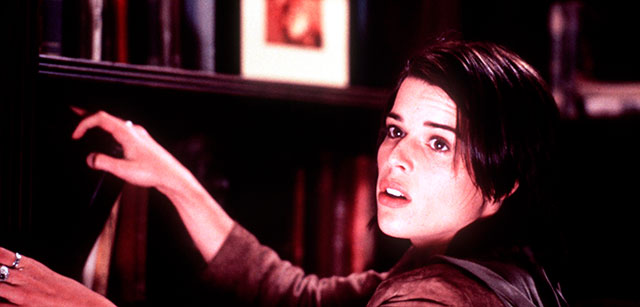
Scream VI tickets are now on sale in Cineworld – so, are you ready to confront a new Ghostface killer?
Throughout the grisly Scream series, Sidney Prescott (Neve Campbell), Gale Weathers (Courteney Cox) and Dewey Riley (David Arquette) have seen off an assortment of psychos adopting the Ghostface alter-ego. These have ranged from acquaintances to long-lost family members and more besides.
In Scream V, the baton was handed to sisters Sam and Tara Carpenter (Melissa Barrera and Jenna Ortega), and they pick up the mantle again in Scream VI. Having moved to New York, the siblings find themselves pursued by a terrifying new Ghostface who is once again looking to subvert the 'rules' of survival.
The twist in the Scream series is that both the killer and the victims are acutely aware of horror movie conventions. This gives the various chase and stab sequences an injection of self-aware humour, as we find ourselves yelling at the screen not to approach that closet or flee up that staircase.
It was a diabolically clever move by Craven and screenwriter Kevin Williamson that galvanised the slasher movie genre in the 1990s. And while we anticipate the release of the new movie, here's our blog ranking of the Ghostface reveals in the series so far...
WARNING: SCREAM SPOILERS AHEAD
5. Scream 4 (2011)
After a long absence, the Scream saga returned for its fourth (and arguably most redundant) instalment. Despite the presence of Craven and Williamson, who hadn't collaborated since Scream 2 in 1997, Scream 4 is mostly content to roll out the familiar set-pieces under the guise of an allegedly meta new twist.
This time the notion of the movie remake is the target, with the new Ghostface killler attempting to become the star of their own reboot. Envious of Sidney's media attention, which has escalated with every passing Scream instalment, this psycho wants to frame two other individuals as the culprits, in the process emerging as the hero of their own story.
It's all very knowing, pointing its way towards the late noughties trend of redundant remakes that fail to bring anything new to the party. The irony is, Scream 4 falls right into that trap, although there are entertaining pleasures to be had.
The movie also skewers the idea of the self-made celebrity, pertinent given that Scream 4 was the first of the movies produced in the era of social media. Yet it's the performance of Emma Roberts (Julia Roberts' niece) that drives the knife home. Her character Jill is introduced, naturally, as the unassuming all-American girl next door, before revealing herself as one of the most vicious killers in the series.
In fact, Scream 4 returns to the notion of two Ghostface killers (not utilised since the second movie), with both nutcases interchanging at will. Jill's aim is to kill and frame her accomplice Charlie (Rory Culkin), making it look as if he's the partner of Jill's ex Trevor (Nico Tortorella).
Jill's determination to make herself seem innocent is pretty demented, even by Scream standards. Stabbing herself and throwing herself into pictures and glass tables, she believes that unpleasant physical injuries will aid her cause and make her seem like the afflicted party.
Of course, this all depends on Sidney being out of the way, and when our heroine refuses to oblige, despite being stabbed, it sets up a violent final showdown. This is where the sense of self-awareness reaches fever pitch, with Sidney's coup de grace "Don't f**k with the original". Cue two defibrillation paddles to the head, and Jill is out of the picture.
The film is flawed but Roberts is clearly having a blast in trampling her wholesome screen image to the death.
4. Scream V (2022)
The fifth Scream movie was, poignantly, the first to be made in the wake of Wes Craven's death. However, Ready or Not filmmakers Matt Bettinelli-Olpin and Tyler Gillet proved more than up to the task, having effectively completed a blackly comic dry run with their hit satirical horror movie Ready or Not (2019).
Scream V returns us to haunted Woodsboro where a copycat Ghostface killer is on the rampage. At the beginning of the movie, young Tara Carpenter barely survives with her life when Ghostface attacks, seemingly spurred on by Tara's high-falutin' love of so-called 'elevated horror' like The Babadook (2014).
Tara's attack prompts her estranged sister Sam to return to Woodsboro with her boyfriend, Richie (Jack Quaid). It soon becomes clear that the new Ghostface is attempting to launch a 'requel': a reboot cum sequel that will mix and match the legacy Scream characters with an assortment of brand-new victims.
This grisly hypothesis becomes starkly clear during the final conflict. The apparently loving Richie reveals himself as one of the two killers, the other being Tara's alleged best friend Amber (Mikey Madison).
Both Richie and Amber have become disillusioned with the film-within-a-film series Stab, itself inspired by the gruesome events of the first Scream film. They plan to drag in original survivors Sidney, Gale and Dewey (the last of whom tragically falls to Ghostface's knife), ultimately pinning the deaths on Sam.
The makers of the Stab movies will then capitalise on these events, reigniting fan interest in ghoulish fashion. However, Richie and Amber's plans are spectacularly foiled by the cross-generational spectrum of survivors.
Gale shoots Amber onto a lit gas hob, burning her to death. Richie, meanwhile, is the victim of Sam's latent blood-lust. In the movie, Sam discovers she's the biological daughter of one of the original Woodsboro killers, Billy Loomis, and this discovery compels Sam to make a shish-kebob of her treacherous ex.
3. Scream 2 (1997)
Scream 2 was fast-tracked into production after the runaway success of the original movie. It's a testament to Craven and Williamson's skill that they get more mileage out of their witty central conceit, expanding on the notion of a self-aware killer and the horror-loving victims.
The first indication that Scream 2 is bloodier, scarier and more ambitious than the first film comes during the opening sequence. The events of the first Scream have now inspired a film-within-a-film, called Stab, and Scream 2 begins with its rowdy, popcorn-slinging premiere, populated by fans wearing Ghostface costumes. This means that the new killer can slip in incognito, which spells bad news for Jada Pinkett Smith's Maureen in a harrowing and disturbing death scene, initially dismissed by the cinema's attendees as a piece of theatre.
It then becomes official: Ghostface has returned, this time to the Windsor College campus, to make a gruesome point about the notion of movie sequels. As explained by Scream's resident movie guru Randy (scene-stealer Jamie Kennedy), the fact that a new killer is on the loose means the rules have changed, and anyone is now potentially for the chop.
This is a terrific way of giving the movie an air of unpredictability, as we're constantly second-guessing the potential suspects and their motives. Kudos to the filmmakers for once again pulling off the two killers gambit immediately in the wake of the first movie. We thought we wouldn't be caught out but we were, with Sidney's friend Mickey (Timothy Olyphant) and alleged reporter Debbie Salt (Laurie Metcalf) revealed as the twisted masterminds.
Of course, they've each got different motives. Mickey is in it for the bloodlust and, in a classic Scream twist, he plans to blame the negative influence of horror cinema at his eventual trial. The more significant of the two killers is Debbie, not, in fact, a local TV reporter but the mother of Billy Loomis (Skeet Ulrich), Sidney's ex and one of the two killers from the first film. (There are distinct echoes of Friday the 13th in this twist, the movie invoked at the start of the first Scream that spells doom for Drew Barrymore's Casey Becker.)
She wants to see Sidney pay for the death of her son, leading to a brilliantly staged showdown at the campus theatre. (This, and Mickey's acute observation about an audience's love of theatre, is foreshadowed earlier in the film during the visually brilliant 'Cassandra Aria' sequence, in which Sidney performs on-stage while being stalked by Ghostface.) Further complicating the situation is the sudden reappearance of Cotton Weary (Liev Schreiber), the man who went to prison for Maureen Prescott's murder after sleeping with her. In a nice dose of morbid humour, Cotton must weigh up letting Debbie kill Sidney, thereby leaving him as the hero of the hour, or letting Sidney live and clear his name via interview. Ultimately, he goes for the latter, shooting Debbie dead.
In our opinion, it's not quite the best killer reveal in the series (hence its placement on this list). But it does package up all of the complex facets about the hit Scream franchise, on the one hand satirically calling out the seemingly pernicious influence of violent horror movies, and on the other continuing the darkly engrossing mythology in the manner of a classic sequel. The film has its cake and eats it too, which at the time resulted in box office success and more critical plaudits.
However, it was a bumpy journey getting to that point. Kevin Williamson's script was leaked online, prompting some rapid and stressful rewrites to keep the Ghostface identity a secret. (He'd also lined up several dummy scripts featuring different killers, not intended for production, to further put people off the scent.) It's therefore impressive that Scream 2 coheres as well as it does, hitting that sweet spot of creepy terror and ghoulish laughter.
2. Scream 3 (2000)
Even the most ardent Scream fans confessed to fatigue by the time the third movie came up. Kevin Williamson couldn't commit to writing the script this time, instead handing his basic notes to Ehren Kruger (later a writer on the Transformers movies). Despite Craven's sturdy hand behind the camera, Williamson's characteristically deft blend of horror and humour is missed with the movie potentially becoming too meta for its own good.
After all, these were movies that existed on a knife's edge between humorously satirising horror conventions and intentionally leaning into them for scary effect. Tip it too far one way or the other and the formula becomes unbalanced. That's what happens in Scream 3, which largely takes place backstage during production on Stab 3 – yes, the film-within-a-film franchise is, at this point, directly mirroring the development of the Scream series itself. Eye-rolling or deviously amusing?
Cynicism aside, Scream 3 does have several things in its favour. For one, Neve Campbell delivers possibly her best performance as Sidney, contending with the spectral presence of her dead mother Maureen whose backstory kicked this whole nightmare off. There's also an effective chase scene through a reconstruction of Sidney's Woodsboro home, a neat way of amalgamating past and present while underlining Sidney's inability to escape from this cycle of terror.
It also scores with its pivotal killer reveal, the first time in the series that a lone wolf is identified as the culprit. Via this character, Scream 3 does an excellent job of tying up the various threads of the previous two movies, driving home the sense that Sidney's tragic family history has been behind everything since day one. Hence the reveal of the killer as Roman Bridger (Scott Foley), Stab 3 director and Sidney's long-lost half brother, who was conceived by his mother Maureen during her ill-conceived jaunt to Hollywood, and later abandoned.
Nowhere else in the series is Sidney's connection to the killer more personal. This gives Scream 3 a modicum of dramatic weight during the inevitably brutal climactic showdown, as Campbell's character deals not just with a murderer but the vicious embodiment of everything in her dark past. That voice-changing device, though? That's just stupid.
1. Scream (1996)
The first Scream movie is still far and away the best, operating on two levels simultaneously as a rollicking horror rollercoaster and a sly genre takedown. Wes Craven had dabbled in this meta approach just a couple of years prior in New Nightmare, which brought slasher icon Freddie Krueger (Robert Englund) into the real world. But it was merely a dry run for Scream, which very much played into the post-Quentin Tarantino/Pulp Fiction landscape of characters using pop culture knowledge to make sense of their surroundings.
It all kicks off with one of the most terrifying, relentless opening sequences in horror history. We see Drew Barrymore's Casey Becker tormented over the phone by Ghostface (cue the sinister, insinuating vocals of actor Roger Jackson), her life, and that of her boyfriend Steve, hanging in the balance. She's taunted with the possibility that knowledge of horror films could save both of them, an early sign of how the history of horror would become tangibly embedded within the Scream universe.
Of course, it doesn't work out for Casey or Steve, and nowhere else in the series is that giddy blend of self-awareness and horror more acutely felt. Indeed, the approach became increasingly watered down for allegedly humorous effect as the series progressed. The Ghostface killer was immediately earmarked as a horror film (and Halloween) icon in the wake of this scene, and the rest of the film keeps us guessing as to the person is behind the mask.
We've ranked the reveal of the killers in the first Scream at the top of our list simply because of its freshness and innovation. All the other movies in the franchise were forced to copy this approach. The psychos in this movie are revealed as Sidney's aforementioned boyfriend Billy Loomis (Skeet Ulrich) and his partner-in-crime Stu (Matthew Lillard), two lunatics who've watched far too many movies, and who exploit their duality for plot-twisting effect.
Earlier in the movie, Billy climbs in through Sidney's window after she's attacked by the killer. It can't be him, right? But when a phone falls out of his pocket, he's earmarked as the culprit and arrested, conveniently giving him an alibi as the murders continue while he's inside. Not to mention his own death at the hands of Ghostface is staged with plenty of corn syrup, used, as he says, "as pig's blood in Carrie". This diabolical attention to detail in Craven's direction and Williamson's screenplay, drawing attention to the enjoyable artifice of horror films, places Scream high above other movies in the genre. But the real kicker comes in the characters' motivations.
At the time of Scream's release, it was unusual and highly inventive to have a killer self-reflexively explain their actions via the medium of cinema. When Sidney demands a motive from Billy as to why he killed her mother Maureen, he's keenly aware that in doing so, he's playing right into the traditional expectations of the horror genre. It turns out that the troubled Maureen had an affair with his father, causing his mother (later revealed as Debbie Salt in Scream 2) to walk out. In Stu's words, Maureen was "no Sharon Stone", after which Billy rhetorically asks, "is that motive enough for you?" Both Billy and Stu also take great relish at their success in framing Cotton Weary for Maureen's murder.
Stu's motivations, meanwhile? "Peer pressure," he wails, after the two headcases have repeatedly stabbed each other (for real this time) to make themselves seem like the innocent party. It's a microcosm of Scream's ability to make us laugh and gasp in equal measure – in fact, those contradictory responses often occur within the register of a single scene.
Can the new Scream movie possibly come close to this pinnacle of 1990s horror? We'll have to wait and see.
Click here to book your tickets for Scream VI, opening at Cineworld on 10th March.
Who do you think the Ghostface killer will be in the new Scream movie? Tweet us your thoughts @Cineworld.
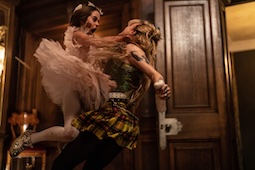
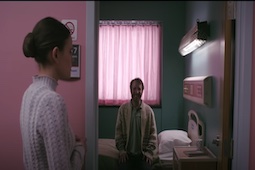
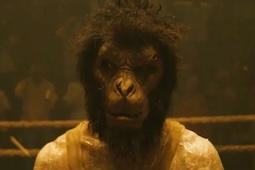
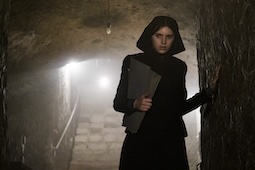
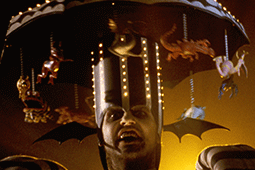
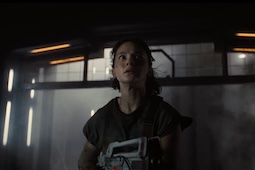
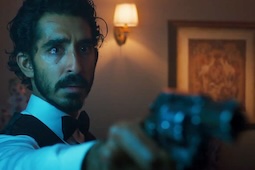
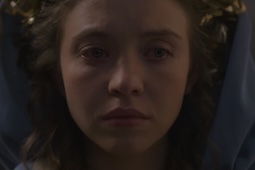
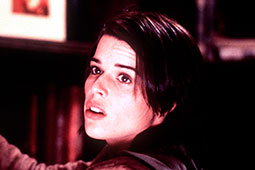
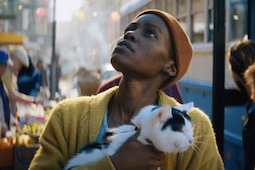
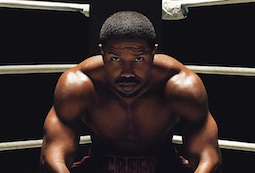
.jpg)


.jpg)
.png)






